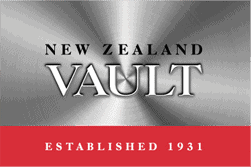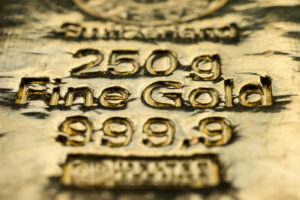Many leading economists, financial commentators and top investors are now publicly predicting the end of this historic 10-year bull run for U.S. stocks. Famed investor and economist, Gary Shilling, has begun shorting the S&P 500 and believes the U.S. economy could already be in a recession. Warren Buffett has built up a war chest of cash equivalents, while Jim Cramer sees safety in gold bullion and other counter-cyclical assets. In addition to top advisors, there are also numerous economic indicators signalling a contraction in the U.S. economy in the coming year. Understanding how to diversify your savings with counter-cyclical assets could help preserve wealth during the next economic downturn.
In preparation for the inevitable correction, savvy investors like Gary Shilling and Jim Cramer are utilizing counter-cyclical assets to diversify their portfolios and preserve wealth. The terms cyclical and counter-cyclical refer to the correlation an asset has to the US economy. Assets that perform well during an economic expansion are referred to as cyclical, whereas assets that perform well during a recession are counter-cyclical.
Gold bullion is one of the most consistent performing counter-cyclical assets; utilized by investors worldwide to diversify savings and investment portfolios. With so many financial experts warning of a coming recession, it is not surprising to see gold and silver prices up more than 20% in the past 6 months. Investors cannot control the economy, but they can diversify their holdings into asset classes that are immune to economic contractions or recessions. Preserving wealth during a recession is just as important as building wealth during an expansion.
There are two very good reasons for moving into counter-cyclical assets at this time; one is defensive and one is offensive. As a defensive play, diversifying into uncorrelated assets prior to a recession will help protect and preserve your nest egg. Counter-cyclical assets, like gold, will maintain their value while stocks, mutual funds and other dollar-based assets decline.
Looking back at major corrections over the past century, history shows it can take a considerable amount of time to regain wealth lost during a recession. For example, during the Great Depression, the Dow Jones lost a staggering 89% of its value! It was not until 1954, some twenty-five years later, before the stock market regained what was lost.
Chart of the Dow Jones Industrial Average from 1915-1960.

During the more recent Great Recession, the S&P lost 56.4% of its value from its high on 9 October 2007 to its low on 5 March 2009.
Even with an estimated $831 billion worth of fiscal stimulus, it still took 3 years 5 months for the S&P to regain its 2007 highs.
Chart of the S&P 500 during the period of the Great Recession.

While history shows us that cyclical assets, like stocks and mutual funds, can lose significant value during a contraction, gold bullion has shined. During the period October 9 2007 (the S&P 500 high prior to the Great Recession) and 15 March 2013 (the date the S&P got back to the pre recession high), the gold price soared by 111%.
Gold Prices during the Great Recession

The second reason to hold counter-cyclical assets during a recession is an offensive one. When markets go through a major correction they inevitably over correct.
This is where investors like Warren Buffett see bargains and move in and buy. The ability to protect wealth during a recession not only preserves your nest-egg, it also creates an opportunity to repurchase fiat-based assets at their lows.

Insight into the stages of an economic cycle can be very useful for businesses and investors. As we reach the peak of the current U.S. economic cycle, investors like Buffett are already moving into counter-cyclical assets like short term treasuries in order to preserve wealth.
Leading economists, commentators and even financial intuitions have begun warning their clients of the coming downturn. With interest rates at historic lows, the opportunity cost of owning gold has never been lower. And because of the countercyclical nature of gold, there is a real upside when things goes bad in the equity markets. It is because of these two factors that I believe physical gold bullion should sit along with short term treasuries in your portfolio towards the end of a business cycle.
Article by John Mulvey
Disclaimer: This article is an opinion piece and as such it should not be taken as investment, tax or legal advice and nothing provided in any materials by New Zealand Vault should not be construed as such. Before undertaking any action, be sure to discuss your options with a qualified advisor. The information in this article is based on the best research available to date, however due to the ever changing landscape of the world economy and the growing developments in world politics, this information may become out of date relatively quickly. Please verify all facts and get in contact with us if you have any issues with our content.

John Mulvey is the owner and CEO of New Zealand Vault. New Zealand Vault has been operating since 1931.
New Zealand Vault has safe deposit box vaults in Auckland and Wellington and has a specialist bullion depository in Wellington.







